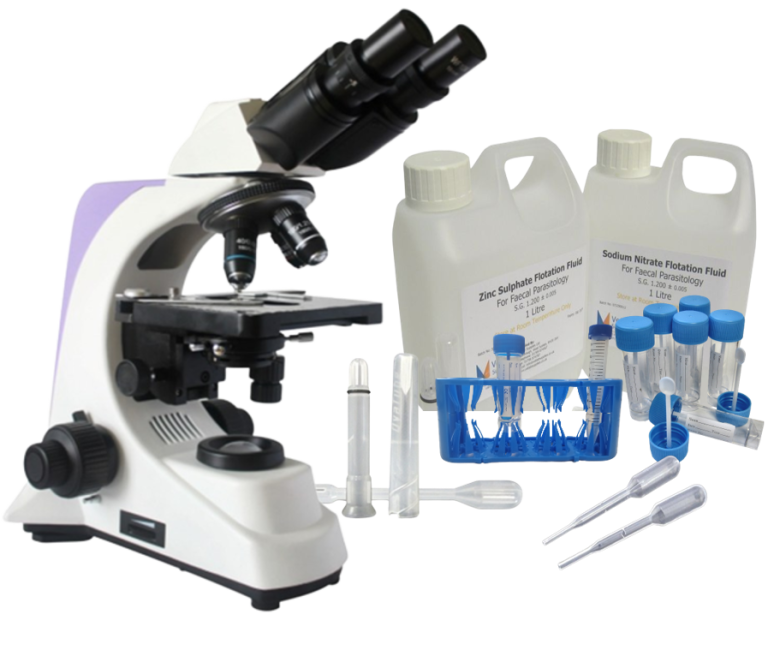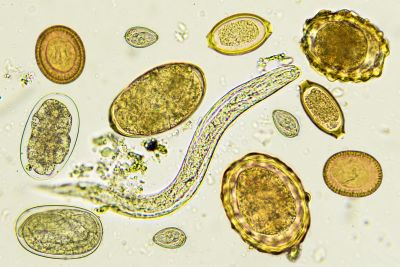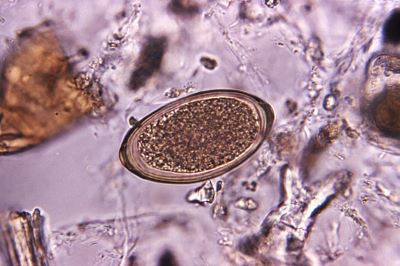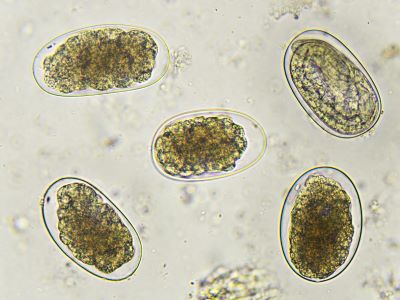Description
To make it easy for you Vetlab Supplies have put together some discounted tailor-made F.E.C starter kits with everything you need to get started. Available with or without microscopes and all options are available with bespoke flotation solutions in both 1L and 5L.
These kits are available in 2 options, McMaster Method or ParaTEST Method (Concentrated Flotation Method) and contain all of the consumables needed to carry out a Worm Egg Count.
To view the kit contents & prices please select options from the drop down menu above.
Options include:
Option 1: DIY STARTER KIT (SKU M6107-12)
Vetlab Premiere 60L Monocular LED Microscope & McMaster Testing Kit
This includes a basic, low-cost monocular microscope ideally suited for Parasitology. It has 3 objectives – 4X, 10X, 40X magnification and 10X magnification eyepiece and has a mechanical slide holder, ideal for holding not only normal slides but also the McMaster slide. This microscope is small and portable as well as mains-operated, so can be used anywhere on the farm etc. without the need for power and is supplied together with either all consumables/equipment for McMaster worm egg counts or ParaTEST method. Absolutely ideal for the beginner at low cost and the microscope has a 2-year warranty!
Option 2: DIY LCD STARTER KIT (SKU M1051)
Euromex LCD Microscope & McMaster Testing Kit
This includes the Euromex MicroBlue microscope with an LCD Screen which makes viewing very easy and enjoyable. It also has a lot of extra benefits including a 10-year warranty on mechanical parts and 2 years on electrical items. This is supplied together with either all consumables/equipment for McMaster worm egg counts or ParaTEST method.
Option 3: PROFESSIONAL STARTER KIT (SKU M6107-51)
Vetlab Premiere 260 Binocular Professional LED Microscope & McMaster Testing Kit
This includes our Vetlab Premiere 260 Binocular microscope aimed at the more experienced user who may require the microscope for other types of test. It is equipped with 4 objectives including 100X oil magnification and comes with a 2-year warranty. Again, this is supplied together with either all consumables/equipment for McMaster worm egg counts or ParaTEST method.
Option 4: KIT ONLY (SKU: M6107-13)
McMaster F.E.C Testing Kit (without Microscope)
This contains all the consumables/equipment for McMaster worm egg counts (without a microscope). Useful for customers who already have a microscope or those who wish to replenish their consumables.
Please do not hesitate to contact us for more information, advice or to order the options with a different Flotation Solution
For Full Details & Prices On Our Bespoke F.E.C Packages Please Contact Us
For further useful information on the McMaster method please access’ McMaster Counting Slides’ here or watch the video below:





